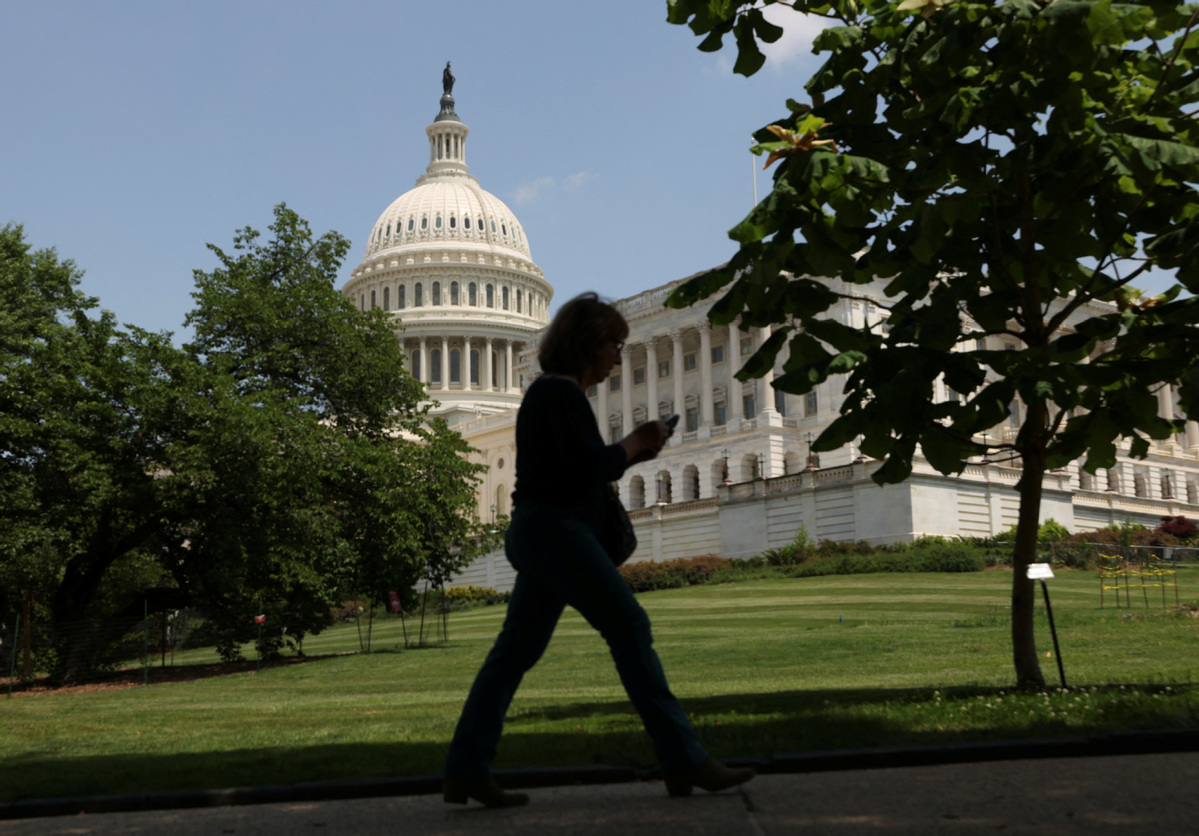US economy stumbles on tariffs and debt


China implemented its first reserve requirement ratio cut this year on Thursday, which is expected to provide about 1 trillion yuan ($138.7 billion) of long-term liquidity to the market. The country also began to implement a package of financial policies on May 7.
These moves are expected to effectively support the stable growth of the real economy by helping optimize the structure of the central bank's liquidity provision to the banking system, reduce bank liability costs, and enhance the stability of bank liabilities.
There is still a lot of room for implementing financial policies in the future, demonstrating that the tools in China's policy toolbox are very rich.
It was against this backdrop that ING Group raised its growth forecast for China this year to 4.7 percent. It has forecast that China's economic growth may be higher this year if a Sino-US economic and trade agreement can be reached within the 90-day deadline.
Morgan Stanley predicts that China's GDP growth in the second quarter may exceed the current expectation of 4.5 percent. UBS also raised its forecast for China's economic growth this year on Tuesday.
But the picture for the US economy seems more bleak.
Moody's Ratings announced that it had downgraded the US credit rating from the highest level of Aaa to Aa1 on Friday. After that, the world's largest economy was downgraded to below the highest rating of Aaa by all three major rating agencies.
Data shows that the total debt of the US federal government has exceeded $36 trillion. For more than a decade, the growth level of the US government debt and interest payment rate has been significantly higher than that of other countries with similar ratings.
Although the US has significant economic and financial advantages, these advantages are no longer enough to fully offset the deterioration of fiscal indicators. The out-of-control budget deficit means that the US government's borrowing will accelerate, pushing up interest rates in the long run.
Moody's Ratings said in a report in March that even in the best-case scenario envisioned by analysts, the fiscal weakness looks set to continue.
In recent years, the US' fiscal deficit has been close to $2 trillion per year, accounting for more than 6 percent of GDP. In the past, US Treasuries have been a symbol of security and stability, and a top choice for investors in times of crisis and turmoil. But a series of policies since the incumbent US administration took office have led to a significant reduction in US assets and a surge in yields.
The timing of Moody's Ratings downgrading is particularly sensitive because earlier in the day, the US president's massive tax reform plan failed to pass due to obstruction by hard-line Republicans within the US House of Representatives Budget Committee.
If the bill, known as "The One, Big, Beautiful Bill", is passed, it will add about $4 trillion to the US structural deficit over the next decade.
In addition, the US economy has also been significantly affected by the US' tariff policy. According to data from the US Department of Commerce, the US GDP shrank by 0.3 percent year-on-year in the first quarter of this year. This is the worst quarterly performance of the US economy since 2022.
The expectation that the US economy is still facing the risk of recession will further increase inflation pressure and the downward pressure on growth. Fed Chairman Jerome Powell said last week the US may be entering a period of more frequent and more persistent supply shocks, which is a huge challenge for both the US economy and the de facto central bank. The Fed chair also expressed his concerns that the US job market will cool down in the future, the unemployment rate may rise, and economic activity may slow down.
Also, the impact of tariff policies on US companies and consumers on rising production and living costs is still evident. Confidence among small business owners and consumers continues to decline. The latest data released by the University of Michigan showed that the US consumer sentiment index fell to 50.8 in May, falling for the fifth consecutive month and hitting the second-lowest value on record.
That being said, what the US needs to do is to focus on domestic policy adjustments and collaborate with other economies to achieve more sustainable growth.
































